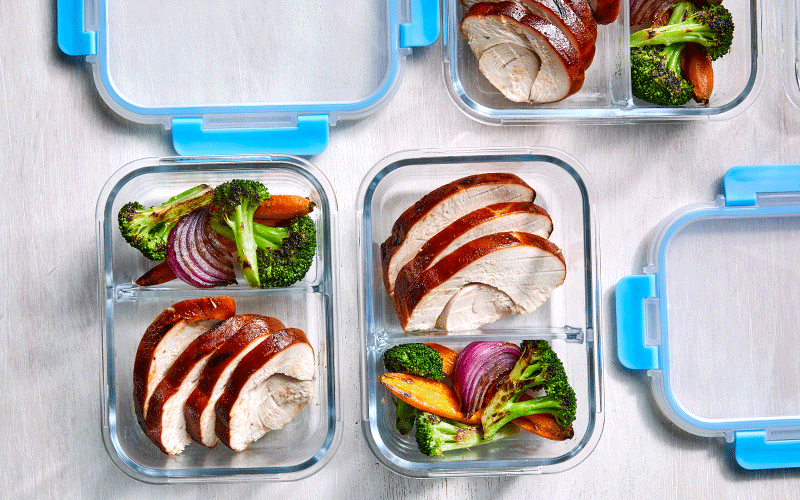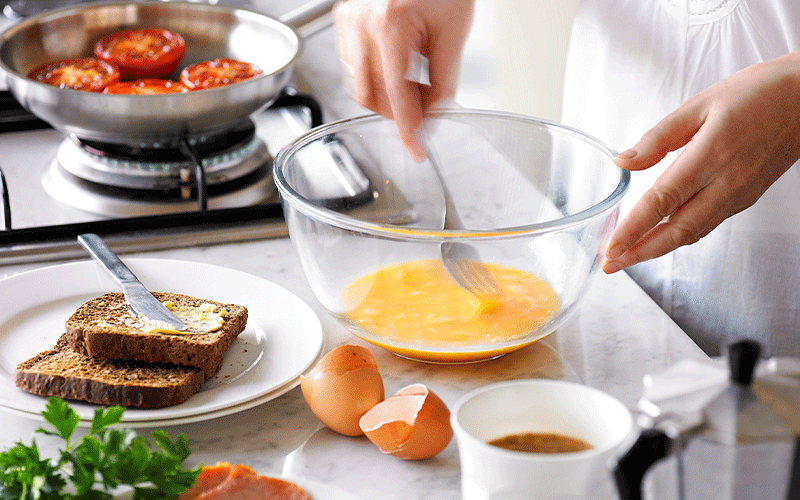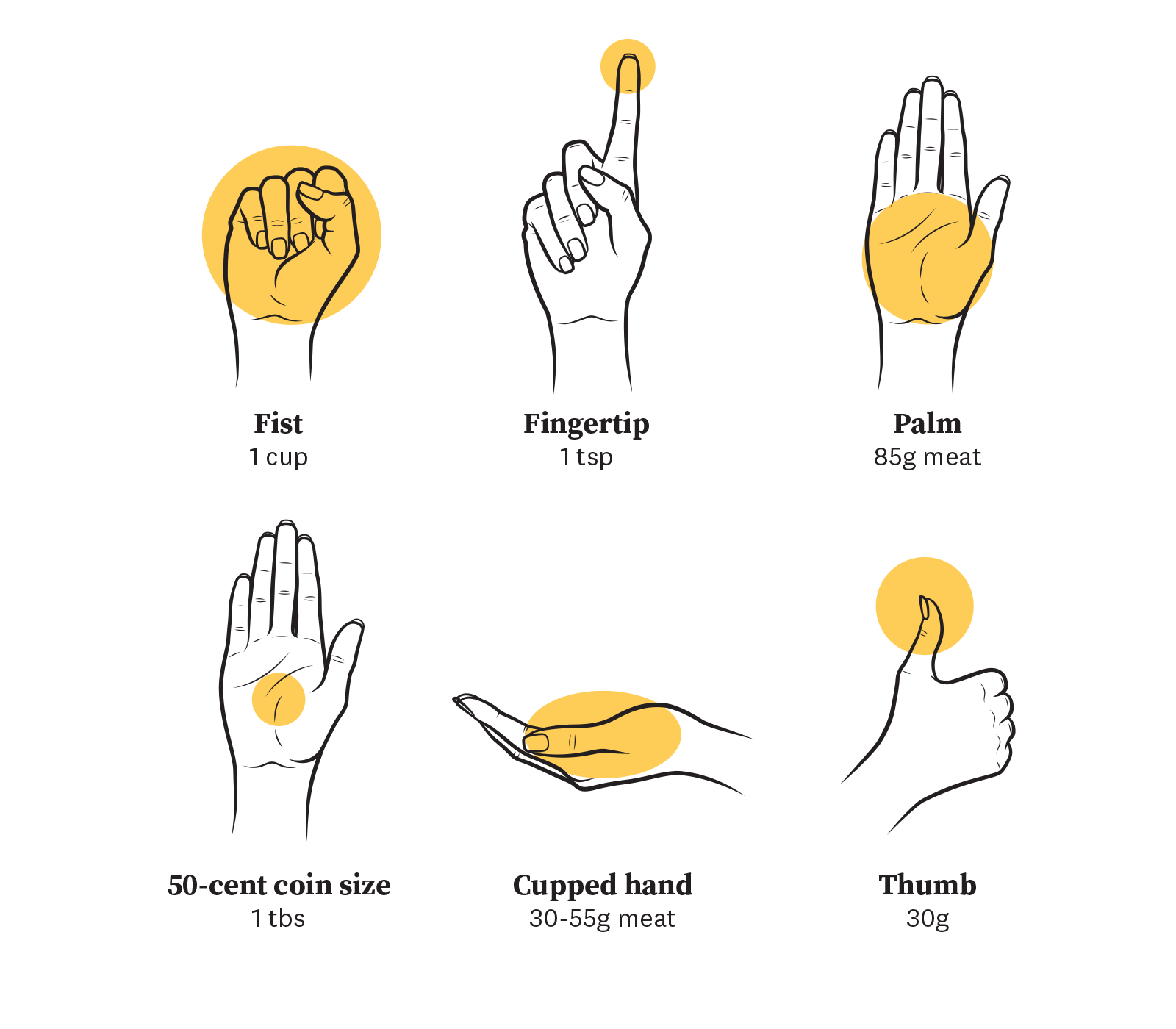11 science-backed ways to lose weight naturally


A coworker can’t stop talking about their juice fast. Your sister swears by her new no-carbs-allowed plan. Your neighbour drinks only shakes. It’s easy to gravitate toward these crash diets because they make weight loss sound so simple. All you have to do is drink this or cut out that to get results, right? But the payoff may not last.
“Fad diets are tempting, but they’re not sustainable over the long run,” says Angela Goscilo, M.S., R.D. They often are super restrictive and ban long lists of foods, which, let’s face it, is tough to stick to in the real world. On top of that, rapid weight loss can be dangerous, leading to issues like nutrient deficiencies.
So if trendy fad diets are out, what’s in? Losing weight in a more natural, sustainable way and focusing on improving weight health, which is how your weight impacts your overall wellbeing. And the key to doing that is building healthy habits that you can live with, says Goscilo. The following simple steps, all backed by scientific research and approved by WeightWatchers®’ team of scientific and nutrition experts, show you how to lose weight naturally. Try working them into your daily routine, and you’ll notice results—no diet supplements, gimmicks, or bread bans required.
1. Drink (a lot of) water
Put that supersize, reusable water bottle to work. “Drinking more water can help with satiety,” says Vivek Gupta, M.D., MPH, a board-certified obesity medicine doctor in California, United States. One small study even suggested that drinking water before meals can take the edge off of hunger so you eat less. On top of that, sipping water satisfies your thirst without adding on extra calories (kilojoules)—the same can’t be said for sweetened drinks.
Everyone has their own hydration needs based on things like age and activity level. If you want to up your H2O intake, keep a water bottle within easy reach, like on your desk or in your bag. At the very least, try to drink water with each meal and before, during, and after exercise.
2. Swap out added sugar
Eating a diet high in added sugar—the kind that’s added to foods during processing or preparation—may set the stage for obesity and other chronic diseases by increasing the calories in a food or beverage and making it harder to lose weight.
Take a look at what you eat and drink that is high in added sugar and make some simple substitutions. For example, switching soft drink for water helped people shed roughly 2.5% of their body weight in six months, according to a study in the American Journal of Clinical Nutrition. If you want something sweet, choose a food with natural sugars, like grapes, mango, and berries. Yes, they’re all fruit. But, more importantly, they have another f-word in common: fibre. This nutrient can help you avoid a post-snack spike in blood sugar, something research shows can lead to overeating.
3. Squeeze in more sleep
Between work, having fun, and family duties, sleep often gets the short end of the stick. But not getting enough shut-eye triggers changes in hormones like ghrelin and leptin, which make you feel hungrier than you otherwise would. Sleeping too little also affects your ability to self-regulate your cravings, says Gupta. In other words, it’s much harder to turn down the siren call of that biscuit when you’re exhausted.
If you’re reading this, nodding your head in agreement, it’s time to move up your bedtime to ensure you get the recommended 7 to 8 hours of quality sleep a night. Want some motivation? According to a 2022 JAMA Internal Medicine study, sleep-deprived adults who were overweight ate 270 fewer calories a day after they added an hour of sleep each night.
4. Track your meals
![]()
The simple act of maintaining a food diary ups your odds for losing weight and keeping it off, says Dr. Kathryn M. Ross, Ph.D., MPH, an Associate Professor at the University of Florida’s Department of Clinical and Health Psychology, United States. Not only does it force you to be more aware of what you’re putting in your mouth, but it also can help you see if you’re eating the right amount of calories for your goals. According to Ross, it would be like heading out on a road trip in a car without a fuel gauge—there’s no way to track your progress.
Take notes on the kind of food, how much you ate, and what time you ate it. While you can always go the old school pen-and-paper route, the WW app makes food tracking a lot easier. That’s important since consistency is key. Research from the WW Success Registry showed that 74.4% of members who lost at least 9 kilograms on WeightWatchers and kept it off for at least a year track their food most of the time or all of the time*.
5. Fill up on fibre
It’s not the sexiest nutrient in the world, but it sure is impactful. “Fibre slows down your digestion, which can help you stay full,” says Su-Nui Escobar, RDN, a registered dietitian nutritionist in Florida, United States. The byproduct of staying full longer: You eat less and can lose weight. A 2015 study in the Annals of Internal Medicine revealed that people who focused on eating 30 grams of fibre a day—without making any other changes to their diet—lost weight and lowered their blood pressure.
To get that amount of fibre in your day, plan meals and snacks around beans, lentils, and produce, such as raspberries (7.8 grams of fibre per cup), green peas (8.6 grams per cup), and broccoli (3 grams per cup). And swap refined grains for their wholegrain counterparts: Brown rice has 2.9 grams of fibre per cup while white rice only has 1.3 grams per cup.
6. Set specific goals
Having something to aim for can boost your motivation. One 2016 study in the Journal of Human Nutrition and Dietetics found that people who set goals as part of a weight-loss plan were more likely to have shed 10% of their weight after a year compared to those who didn’t.
Come up with a doable diet or exercise target and get detailed, says Goscilo. “Walk at least 15 minutes after work daily” is better than “exercise more.” Also focus on a goal you can work actively toward rather than a behaviour you want to stop. For example, instead of swearing off fried foods from now until the end of time, commit to eating at least one serving of vegetables at each meal.
7. Plan and prep meals

When you’re busy and don’t know what’s for dinner, it’s more tempting to go for the easy option, like the restaurant drive-through, rather than the healthier, more time-intensive choice of thinking about what to cook, ensuring you have the ingredients on hand, and making a meal from scratch. A simple solution: Meal plan and prep as much as you can ahead of time. Knowing what you’re going to eat that week and having a portion ready to go can also help you eat more whole foods (which are full of nutrients without things like added sugar) and cook more of your own meals—something that research shows can help you eat fewer calories, fat, and sugar.
If you’ve never done this before, meal prepping can feel overwhelming, but it doesn’t have to be. Start by picking one or two recipes you want to make that week, grabbing the ingredients you need from the shops, and doing what you can in advance. This means things like chopping up veggies, marinating meat, or even fully cooking some of the components like the rice.
8. Get moving
This will come as a surprise to absolutely no one, but physical activity is important for natural weight loss: A review of 33 studies found that people who exercised regularly and changed what they ate lost 20% more weight than those who only made diet changes. They were also more likely to maintain that weight loss. On top of that, research shows that being active can help you be more resistant to stressful situations (and high levels of stress are a risk factor for obesity).
Now for the fun part: You can (and should) choose any activity you like. “The best workout is the one that you’ll keep doing,” says Goscilo. Challenge your kids to a dance-off, walk your dog around the neighbourhood, or even sneak in some strengthening moves while you cook. You can also break your activity up into smaller chunks: Try squeezing in 5 or 10-minute bouts of exercise—a plank in the morning, a walk at lunch—a few times throughout your day.
9. Pack on protein
When you lose weight and are burning more calories than you’re eating, your body recruits both fat and muscle tissue for energy. Eating more protein helps you maintain that muscle mass, says Gupta. This won’t just help you stay strong, it will also support fat loss and help keep your metabolism higher (muscle burns more calories than fat). Eating protein also fends off hunger: It keeps you fuller and more satisfied than carbs or fat, according to a study in the American Journal of Clinical Nutrition.
Aim to get some protein at each meal and snack, suggests Escobar. The current recommended dietary intake (RDI) for protein is 0.75 grams per kg of bodyweight for women and 0.84 grams per kg of bodyweight for men. Meaning? A female who weighs 65 kg needs about 49 grams of protein per day. High-protein foods include not just poultry and fish, but also vegetarian sources like Greek yoghurt, eggs, and beans.
10. Bet on breakfast

Not everyone trying to lose weight has to start their day with breakfast, but if you wake up hungry, tend to snack in the a.m., or feel exhausted throughout the morning, make sure you eat something. A 2021 study in Medicine reports that people who eat a daily morning meal have a reduced risk for obesity, type 2 diabetes, and high blood pressure. Other research shows that regularly having breakfast is linked to being more successful at keeping weight off after losing it.
Think of breakfast as a great way to add nutrients to your day. Aim to get a mix of protein and fibre to help you stay satisfied until lunch. A few favourites: A veggie omelette, Greek yoghurt with fruit, or avocado and egg on wholemeal toast.
11. Check your portions
Over the past few decades, portion sizes have grown bigger and bigger. That’s bad news since research shows that people tend to consume more calories when they’re served more food. It makes sense: You’re probably going to make a big dent in a plate of pasta no matter how big of a serving it is.
If it’s been a while since you’ve seen what an actual serving of rice or chicken looks like, it’s smart to measure out your portions to show you how much you’re really eating, says Goscilo. That could mean whipping out the measuring cups and tablespoons, or you could use your hand as a quick guide: A 85g serving of meat is roughly the size of your palm; 30g of cheese equals your thumb; and your fist is about a cup of pasta or fruit.

The harder it feels to lose weight, the harder it can be to keep it off. That’s why choosing small lifestyle changes is an expert-approved approach. You’ll create a more natural path to weight loss and maintenance and feel great along the way. You don’t need to adopt all of the above habits, but pick and choose a few to start with. Then, once those feel automatic, try a few more.
This content is for informational purposes only and does not constitute medical advice, diagnosis or treatment. It should not be regarded as a substitute for guidance from your healthcare provider.
*Phelan S, Halfman T, Pinto AM, Foster GD. Behavioral and psychological strategies of long-term weight loss maintainers in a widely available weight management program. Obesity (Silver Spring). 2020;28(2):421-8.
Nutritional information - Brown rice: https://www.foodstandards.gov.au/science/monitoringnutrients/afcd/Pages/fooddetails.aspx?PFKID=F007641
Nutritional information - White rice: https://www.foodstandards.gov.au/science/monitoringnutrients/afcd/Pages/fooddetails.aspx?PFKID=F007661
